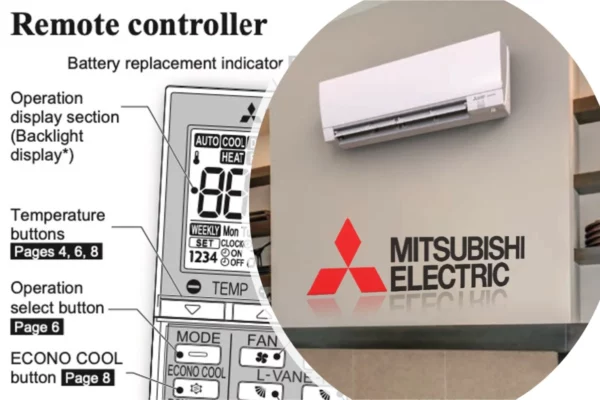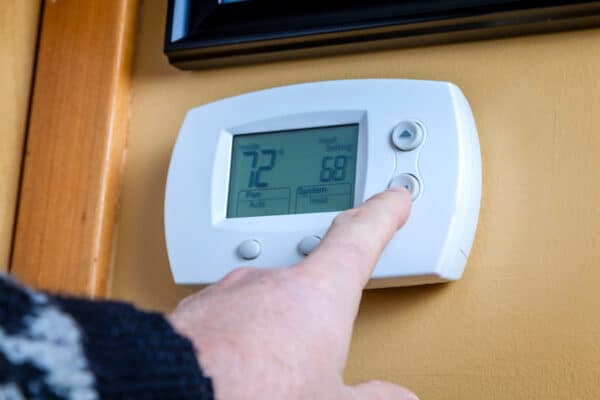6 Solutions to Office Air Conditioner Too Cold
Working in a cold office environment not only decreases our productivity but also affects our health. Knowing the reasons behind cold offices can help us to solve the problem by ourselves where possible.
Most of the unresolved office too cold problem is because of the unbalanced airflow of the central air conditioning system. Too much airflow is directed to office space while somewhere else in the office is having too little airflow. Balancing the airflow in both spaces usually solve the problem.
Too many times when employees complain about the air conditioner is too cold, they didn’t get their issues resolved. In most cases, their maintenance people are having a hard time figuring out the root cause of the problem. It is understandable as there are a few reasons why the air conditioner is too cold.
6 Reasons Why Offices AC Too Cold and How to Fix It
Offices air conditioner too cold can be caused by problems with different complexity ranging from small installation defects to big design issues.
1. Unbalanced Airflow
The most common cause of office AC too cold is unbalanced airflow. As stated earlier, too much airflow is directed to office space while somewhere else in the office is having too little airflow. This is only applicable to centralized and ducted air conditioning system which you can identify it by looking for cold air diffusers or grilles.
After the installation of a central air conditioner, air balancing work must be done by the installer in order to ensure that all spaces the air conditioner serves will have equal airflow and temperature. If the air balancing work is not done, most of the cold air will concentrate at the supply air diffusers nearest to the air conditioner.
How to Balance the Airflow of Central Air Conditioners?
When the air conditioning system is properly installed, the supply air diffusers usually have a damper where you can close the damper by a certain percentage using a screwdriver or other tools depending on the type of the damper.
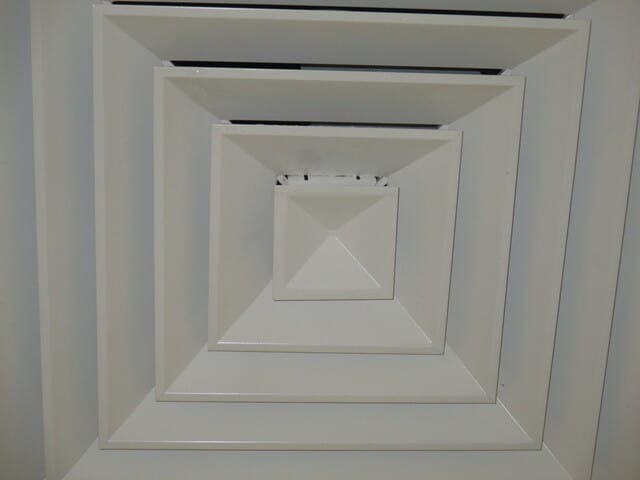
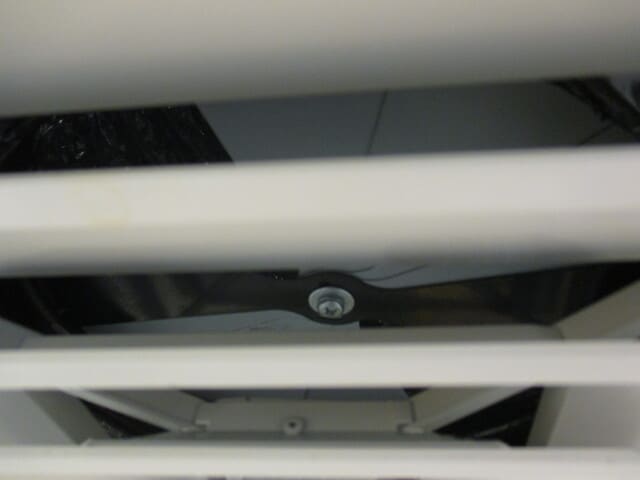
Identify which supply air diffuser is blasting cold air to you and close the diffuser damper by a certain percentage as necessary. However, don’t close the damper too much as the cold air will be directed to other diffusers and it may cause other people to feel too cold later.
Ask Your Colleagues to Help You
Nevertheless, you and your colleagues can join the effort to direct the cold air to a corner so that everyone in the office no longer has to suffer from the cold anymore. Subsequently, ask the people around your office, especially those working on the same floor, if they feel significantly colder because you may have directed too much air to their spaces. If so, tune the dampers again until everyone are satisfied.
Inform Your Maintenance Department
I recommend you inform your maintenance department before you carry out the air balancing work so that they can help you with it and monitor the condition of the air conditioner. Sometimes, you may close the dampers too much and the air conditioner is struggling to push out cold air. Have the maintenance people check the running current of the fan motor of the air conditioner (the ampere may be high due to high static pressure).
Furthermore, not only the supply air diffusers have a damper, there is usually a damper after each ducting branch. However, unlikely you are able to adjust these dampers by yourself. These dampers mostly located above the ceiling and sometimes, there is no ceiling manhole to let you access the space above the ceiling to adjust the dampers. Thus, you are better off inform your maintenance people to have them adjust it as necessary.
2. Poor Thermostat Location
The thermostat is a temperature regulating device that senses the temperature around it and adjusts the supply air temperature accordingly to achieve the desired room temperature. Therefore, the temperature around the thermostat is crucial to the precision of room temperature control.
The thermostat should not put at places where the air around the thermostat is warm. Examples of poor thermostat location are:
- Beside the entrance door – Even though the office has an automatic door, warm air will still infiltrate to the office, especially around the entrance area. Consequently, the thermostat will sense the warm air and tells the air conditioner to provide more cooling even if the office space is already cold.
- Near to the windows – The spaces around the windows, especially large windows, is warmer due to the heat from the sunlight. Thus, the thermostat will sense the warm air and tells the air conditioner to provide more cooling even if the office space is already cold.
- Close to the bathroom – Bathrooms are usually not cool. If a thermostat is located close to the bathroom, the thermostat will sense the warm air and tells the air conditioner to provide more cooling even if the office space is already cold.
In short, an air conditioner needs to know what is the current room temperature in order to control itself and the thermostat tells the air conditioner exactly that. Hence, the thermostat must be put at a location where it is best to represent the overall room temperature such as in the middle of the office space.
How to Identify Poor Thermostat Location?
Look for a wired controller in your office. If it’s not found, ask your maintenance people how the air conditioner controls the room temperature. If it is centralized control, it is not the problem of the thermostat location but either unbalanced airflow or insufficient or no return air.
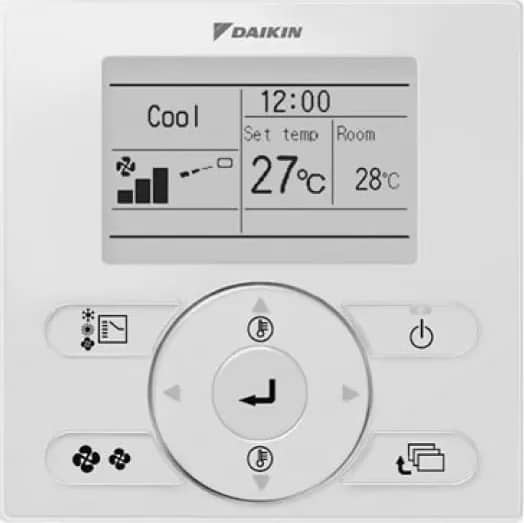
Check the Room Temperature Displayed on the Controller
A wired controller usually has a room temperature reading on its display. If you found the wired controller, check if the room temperature reading on the controller display is odd. For instance, you feel very cold while the room temperature shows 27°C (it doesn’t make sense). Chances are either the space around the thermostat is warm or the thermostat is faulty.
If you can’t see the room temperature reading on the controller display, look around the body of the controller to find the model of the controller and then, google it for its user manual where it’ll guide you on how to press the controller to display the room temperature. For example, one of the Daikin wired controller models is DSLM8.
Inform Your Maintenance Department to Replace the Thermostat
Subsequently, inform your maintenance people of your finding and have them relocate the controller. Otherwise, set the temperature higher on the wired controller to reduce the cold. You may need a password from the maintenance people as it is often locked to prevent sabotage.
3. Insufficient or No Return Air
Some central air conditioners control the room temperature not using a thermostat but by sensing the return air temperature. Return air temperature is a good indication of the current room temperature. The return air sensor is usually installed on the return air duct, above the ceiling, very close to the air conditioner.
If a room doesn’t have a return air grille, the air conditioner can’t tell whether or not that room is sufficiently cooled. Although the room is already cold, the air conditioner will keep providing cold air if the return air temperature is higher than the set temperature.
This problem can be identified by observing if all the small office room without a return air grille is too cold. However, sometimes it is not necessarily because of no return air as the air in the room may return back to the air conditioner via door gaps. Sometimes, it is more likely due to unbalanced airflow.
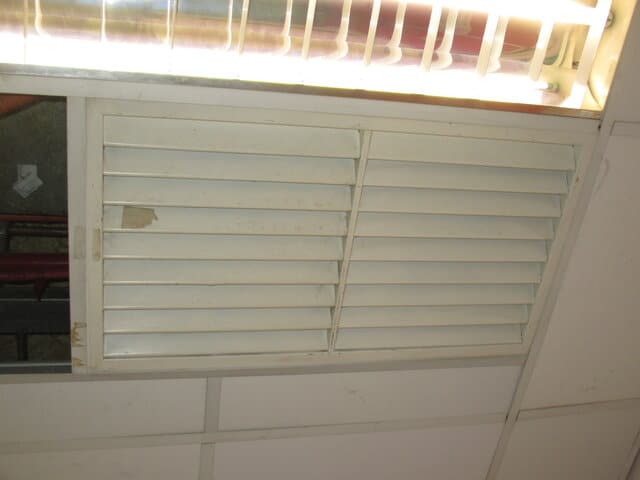

Moreover, the location of the return air grilles also is one of the reasons why the office is too cold. If the return air grilles are located in warm spaces, the air conditioner will sense a higher return air temperature which doesn’t represent the actual room temperature. Thus, the air conditioner will continue to provide cooling until it senses the return air temperature same as the set temperature.
What You Can Do for Insufficient or No Return Air?
Problems with insufficient or no return air are often beyond your capability alone to resolve. Additional ductwork is required to reroute or add more return air grilles. A team of professionals is needed for the messy work and it is costly.
Thus, the best way to counter this problem is to reduce the airflow in your room. You can close the diffuser damper by a certain percentage as necessary. However, again, don’t close the damper too much as the cold air will be directed to other diffusers and it may cause other people to feel too cold later.
4. Thermostat Faulty
A thermostat senses the air temperature around it and controls the cooling power of the air conditioner accordingly. If the thermostat is faulty, it may not able to control the air conditioner and thus, may overcooled or undercooled the space.
In some cases, a faulty thermostat may not even send any signals to the air conditioner, causing the air conditioner to run at full capacity regardless of the room temperature. However, a faulty thermostat sometimes is easily identifiable as people unable to turn on the air conditioner using the faulty thermostat.
What You Can Do for Thermostat Faulty?
When a wired controller displays a correct room temperature, we ruled out the possibility of a poor thermostat location. Hence, we may have a faulty thermostat that is causing the office too cold. But, we can’t conclude it yet because there are many other factors to be considered.
Instead, to simplify things, if you suspect the thermostat is faulty, inform and discuss it with your maintenance people and propose to replace a new thermostat to test if your assumption is correct. Maintenance people should have kept a few spare controllers.
5. Chilled Water Valve Faulty
Arguably, the majority of the central air conditioners are water-cooled. A water-cooled air conditioner doesn’t use refrigerant gas as the air conditioner in our house. A water-cooled air conditioner uses water as a medium for heat transfer.
A certain volume of chilled water enters the air conditioner to provide cooling. A valve is installed on the chilled water pipe to manipulate the amount of chilled water supply to the air conditioner. How much the chilled water should be given to the air conditioner is determined by the thermostat mentioned earlier.
If the chilled water valve is broken, it may not able to provide any chilled water to the air conditioner or it provides too much chilled water to the air conditioner and overcomes the office space. The thermostat will send off a signal to the chilled water valve when it senses that the room is sufficiently cooled but the valve doesn’t stop the chilled water from entering into the air conditioner when the valve is faulty.
What You Can Do for Chilled Water Valve Faulty?
You may talk to your maintenance people and suggest they have a look at the chilled water valve. The valve is located above the ceiling, on the chilled water pipe beside the air conditioner. They can simply adjust the thermostat to see if the valve moves. A broken valve doesn’t move.
Replacing a new valve is a messy job. Usually a professional is needed. Many people leave their faulty valves fully open all the time (they manually pull them open) rather than replacing them because of the difficulty and cost. However, they never realized that by doing so, they not just made somewhere else not enough cold, they also wasted tons of energy and money in generating those chilled water.
6. Oversized Air Conditioning System
Space can be cooled by a range of air conditioners. However, if the air conditioner is oversized, no matter what you do, it’ll always be too cold except for downsizing the air conditioner.
When an air conditioner is oversized for office space, the balanced airflow will still be too much, minimum fan speed will still giving too much airflow. Even though you set the temperature to 27°C or more, the chilled water valve is still can’t reduce the volume of the chilled water sufficiently. Ultimately, provided too much cooling.
What You Can Do for Oversized AC System?
If you noticed that no matter at what temperature and fan speed you set, the room still feels too cold and the airflow is still too much, the air conditioner may be oversized. However, check the chilled water valve first to see if it is broken.
You can’t do much if the air conditioner is oversized. You’ll need to get the maintenance people to contact the manufacturer of the air conditioner and have the manufacturer reduce the capacity of the air conditioner by changing or altering the internal components of the air conditioner. Beware that any alteration not done by the manufacturer usually will void the warranty of the air conditioner.
Other Things You Can Do for a Cold Office
It is understandable that some of the things mentioned above may be too complicated and time-consuming for you to do. Thus, you can try some of the following:
- Counter the cold air using a stand fan – If cold air is blasting from above you, use a stand fan to blow against the cold air to divert it away.
- Don’t afraid to tell your superior – Many people rather be silent and suffer the cold. No harm in informing the problem to your superior as they are obligated to solve your problem so that you can perform your work well.
- File a complaint to the human resource department – Companies are obligated to ensure the safety and health of their employees. Send an email or letter (when necessary) to file a complaint and keep the record for the time when necessary.
- Wear jackets or use a blanket
- Seat somewhere else
- Use a space heater
Although some of the things listed above such as wear more clothes may help you stay warm, it is not a long-term solution for your health. A cold office not just low in temperature, the humidity is also low which may cause dry lips and headaches for some people.
To solve the problem, things must be done to the air conditioning system and fix cold offices once and for all. I’m always amazed by companies that don’t want to spend money on fixing their icy cold office but pay significantly more money for the high electricity usage.
If you have anything to add (or ask) about this topic, leave a comment down below!




